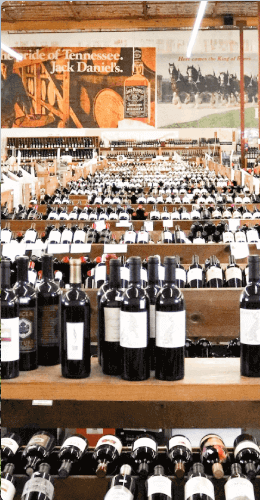The War of the Chardonnay Wine Worlds: Wines from the Old and New Worlds

When we use the term Old World we basically refer to Europe and its wines, while the term New World is reserved for wines from America, South Africa and Oceania. Although all true wines are made from the same species of grapes, their profiles are often radically different. This is, of course, a generalization, and plenty of Old World winemakers try to finish wines in a more New World style and vice versa.
While the Old World generally offers more classic wines meant to be paired with food, the New World focuses on making wines that can be drunk on their own. European wines tend to be somewhat less robust and have more moderate alcohol content (though that is changing thanks to the climate), while in the New World, extraction and color are considered very positive attributes.
European wines tend to be somewhat fresher and less sweet than their New World counterparts. In America or Australia, for example, people like sweeter wines, often reminiscent of aromas of preserves, while in the Old World somewhat more subtle and earthy wines are preferred.
Aging in wood (almost always oak) is often another important difference, since in Europe it seems increasingly clear that oak aromas must be moderate and function as a delicate brushstroke on the canvas of wine. In the New World, wines like to be woody and producers are not ashamed that tertiary aromas are obvious; they seek to round out the tannins and concentrate the wines while dressing them in seductive vanilla aromas.
The New World looks at the grape while the Old World, like white Burgundy wines, looks at the soil. Europe is obsessed with terroir while South African or Chilean wine labels proudly display the name of the varietal. Perhaps the European wines are more different from each other while in the New World the monovarietals draw more recognizable patterns and with abundant common elements among them.
Although European grapes traveled all over the world, cultural, climatic, and historical factors led the inhabitants of different countries to treat them differently, giving rise to wines that have little to do with one other. The Old World is, very roughly speaking, colder and rainier than the New World, where the sun is generous and concentrates the sugars in the grapes. In America or New Zealand there is no fear of experimenting nor are there too strict regulations that limit the profile of the wines; technology has allowed places like California to create wines that surprise the most seasoned critics from the first sip, while Europe seems to continue betting on tradition and wines that age gracefully.
All that said, generalizing in an increasingly global planet is an almost impossible task. Worlds intermingle and styles blur around the globe, offering infinite possibilities to be surprised and enjoy, tasting and drinking, getting to know the different climates and understanding the diverse activities of each producer, as well as the magical fruit of their vineyards. It’s worth the effort to buy white wine online to compare Old and New World styles.
Wines from the Old and New World: Chardonnay
The New World: The Frontier of Chardonnay Wine
New World wines are no longer a surprise, but rather an established reality. Its naked fruit or its uninhibited aging have convinced many unbelievers that they did not see the "new" wine countries as capable of producing extraordinary bottles. From the United States to Australia and from South Africa to South America, new technologies and the eternal search for pleasure have led to modern and highly expressive wines, powerful and low in acidity, based on the strength of the different grape varieties, including prominently Chardonnay, which expresses different styles depending on its New World region. A good example is the Lloyd Cellars Carneros Chardonnay 2021, which is described as giving layers of tropical fruits, pear, and apple, supported by rich vanilla notes leading into a powerful finish.
The Old World: The Origin of Chardonnay Wine
As the Washington Post reminds us, “Chardonnay originated in the Burgundy region of France, and takes its name from a small town in the Maconnais, an area in southern Burgundy that makes relatively inexpensive, high-value chardonnays.” The Old World represents the essence of viticulture, the weight of tradition. From their lands came the grapes that colonized the rest of the planet, but nowhere else has it been possible to reproduce the history accumulated by old wine-producing countries such as Italy or Spain. European wines work wonderfully with food and are able to age gracefully thanks to their fine acidity and good use of barrels. The land is everything in the Old World and each vineyard expresses itself in a different way, giving rise to countless wonderful wines. A good example is 2019 Patrick Piuze Bougros Chablis Grand Cru, which Vinous describes as opening with dried honey and orange pith aromas, displaying a fine bead of acidity of the palate, “saline and vibrant.” That’s not to mention the more typical Old World minerality. No vanilla. No tropical fruit.


















Leave a comment